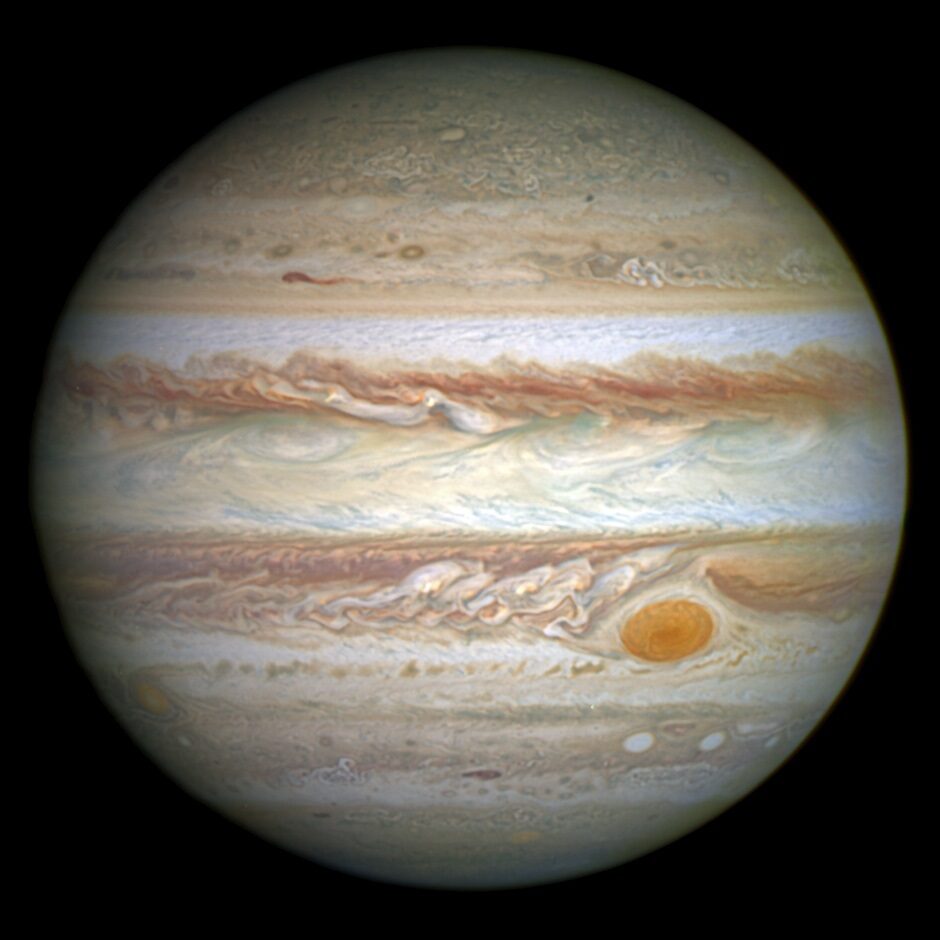A paper published in Geophysical Research Letters claims there is increasing evidence that Earth's 60-year climate cycle may be driven by planetary oscillations. They claim a 60-year climate cycle is found in the Atlantic Multi-decadal Oscillation, aurora sightings, rainfall, and ocean climatic records.
The paper says:
"...the orbital eccentricity of Jupiter presents prominent oscillations with a period of quasi 60 years due to its gravitational coupling with Saturn." The authors propose that the planetary system modulates the interplanetary dust falling on Earth and modifying the cloud coverage.The paper and abstract:
The orbital eccentricity of Jupiter presents a strong 60‐year oscillation that is well correlated with several climatic records and with the 60‐year oscillation found in long meteorite fall records since the 7th century.
Since meteorite falls are the most macroscopic aspect of infalling space dust, we conclude that the interplanetary dust should modulate the formation of the clouds and, thus, drive climate changes."
A 60‐Year Cycle in the Meteorite Fall Frequency Suggests a Possible Interplanetary Dust Forcing of the Earth's Climate Driven by Planetary Oscillations
Nicola Scafetta Franco Milani Antonio Bianchini First published: 14 September 2020 https://doi.org/10.1029/2020GL089954
Abstract
One of the most famous climate oscillations has a period of about 60 years. Although this oscillation might emerge from internal variability, increasing evidence points toward a solar or astronomical origin, as also argued herein. We highlight that the orbital eccentricity of Jupiter presents prominent oscillations with a period of quasi 60 years due to its gravitational coupling with Saturn. This oscillation is found to be well correlated with quite a number of climatic records and also with a 60‐year oscillation present in long meteorite fall records relative to the periods 619-1943 CE. Since meteorite falls are the most macroscopic aspect of incoming space dust and their motion is mostly regulated by Jupiter, we propose that the interplanetary dust influx also presents a 60‐year cycle and could be forcing the climate to oscillate in a similar manner by modulating the formation of the clouds and, therefore, the Earth's albedo.
Data Availability Statement
All data are available from references and public domain repositories: Figure 1 uses the ephemerides data of the orbit of Jupiter available, for example, from the NASA HORIZONS web interface (https://ssd.jpl.nasa.gov/horizons.cgi); Figure 2 uses the temperature reconstruction of Ljungqvist (2010, https://www.ncdc.noaa.gov/paleo-search/study/9924); Figure 3 uses the HadCRUT4 record (Morice et al., 2012, https://www.metoffice.gov.uk/hadobs/hadcrut4/), the Indian summer monsoon record (Agnihotri & Dutta, 2003; Sontakke et al., 1993) (http://iridl.ldeo.columbia.edu/SOURCES/.Indices/.india/index.html); and the G. Bulloides abundance variations data by Black et al. (1999, https://www.ncdc.noaa.gov/paleo-search/study/2532); Figures 4 and 5 use the record of meteorite fall in China from AD 619 to 1943 published in Yu et al. (1983).
A caveat: In the past, I have dismissed much of Scafetta's work as being little more than "cyclomania", i.e. finding spurious cyclic correlations in data where there really isn't any.
That said, there is a bit of plausibility in this idea that the gravitation of Jupiter might herd more micrometeors into Earths orbital path, and it is plausible that with more meteor dust in Earth's atmosphere, that could form more cloud nuclei. Changes in cloud cover would modulate sunlight over time, and thus climatic records.
Or, it may be just another spurious correlation. Either way, I thought it was worth discussing. - Anthony




Reader Comments
R.C.
[Link]
Some links with/for you in mind Jolie😍
[Link]
Second major California Sheriff openly rebels against Newsom lockdown
Just a day after Riverside County Sheriff Chad Bianco told California Governor Gavin Newsom that his department won't be "blackmailed, bullied or used as muscle" against residents during the...